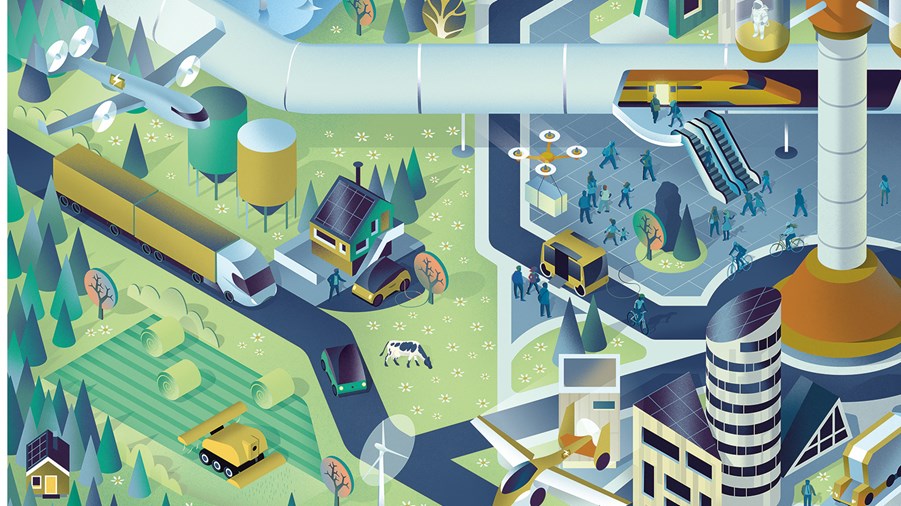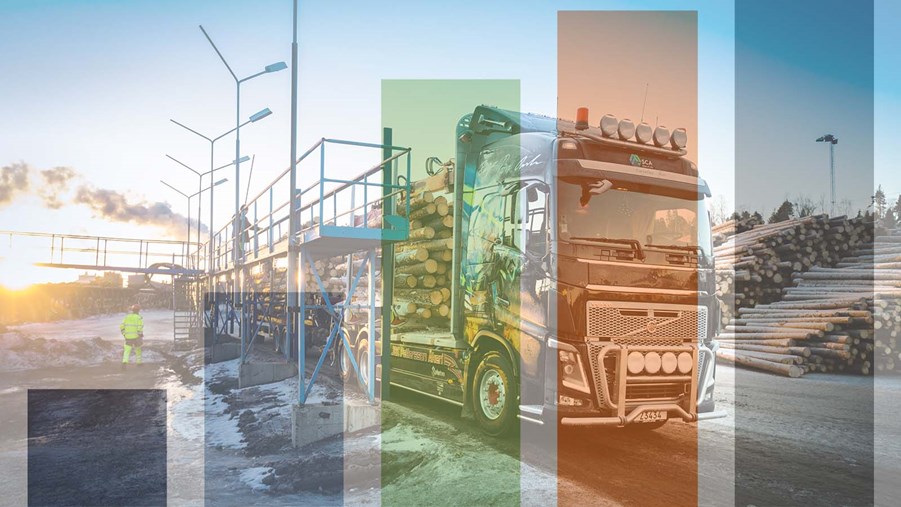
To succeed with the complex transition to sustainable transportation in the future, transport efficiency is a key aspect.
"This is extremely important in order to reduce traffic, and something we can all already affect, since the majority of emissions come from the car journeys we make in our leisure time", says Hans Folkesson, chairman of the Transport Systems work group in IVA's Roapmap for the Climate project.
"There has to be a behavioural change, and this in turn can also help to rationalise freight transportation. Today, for example, we have a significant a lot of unnecessary freight due to free shipping and online shopping returns. We need to rethink without it impacting trade and access to necessary goods and services, regardless of where we live in Sweden."
Smarter transport to boost efficiency
Smarter transport and a transition to more energy-efficient modes can also boost transport efficiency. One approach is to allow lorries with a capacity to carry higher volumes. Another is to move some freight traffic from road to rail and shipping. Sweden decided on this in its 2018 freight transport strategy.
"Demand for freight transport has increased rapidly, but the railway has lost market share in many countries while the biggest increase has been seen in lorries. A major contributor to this is that the railway can barely compete with lorries on price, says Professor Bo-Lennart Nelldal of KTH, Sweden’s Royal Institute of Technology."
"Railways must now increase their quality and capacity and also reduce costs, partly by using longer, heavier trains. With a modern locomotive, trains can be extended from 630 up to 1,050 metres. This boosts capacity by 76 per cent while reducing costs by 21 per cent."
More proposals for better railways
Nelldal highlights several other measures that would increase the use of railways, including investments in infrastructure, maintenance, and new solutions for combined lorry/rail transport. One idea is to develop smart terminals or nodes to enable easier reloading of goods between lorry and train.
Looking several decades ahead, Scania’s Head of Sustainability Åsa Pettersson sees self-driving, connected vehicles combined with improved logistics flows as being the main difference.
"The future will look very different, with autonomous, electrified lorries that can run at the most suitable times when the roads are less busy and not have to be dependent on driver shifts and breaks. This is a development that’s happening faster than anything we’ve seen before, says Pettersson."
Better use of existing infrastructure
Another exciting area is the development of mobility as a service. Anna Kramers, who is heading up the Mistra SAMS research programme at KTH, is looking more closely at how mobility services can help us to use existing infrastructure better. One result of the programme is an app that coordinates several modes of transport, so the user can easily find the best way of getting from A to B and also pay for the entire journey in one place, whichever modes they choose. Another element of the pilot app is that the user can book into ‘hubs’, essentially local offices, rather than travelling to their regular workplace.
“In this study we’re using digitalisation to make it easier for people to change their behaviour,” says Anna Kramers.
“We’re seeing that the app, in combination with the ‘hubs’, can influence the flow of traffic in surprising ways. A lot of people opt to work from the hub until rush hour is over, and travel to work later. This gives us an idea of how to achieve a better flow in public transport in the future."
Similar initiatives around the world
Another example from elsewhere is that city dwellers can book their personal bus route using an app – so the bus stops where the passenger wants, rather than at bus stops. Jean-Paul Rodrigue, a researcher in transport geography, has found how technological advances for sharing cars and the potential of autonomous vehicles can lead to far more sustainable use of vehicles in the future.

